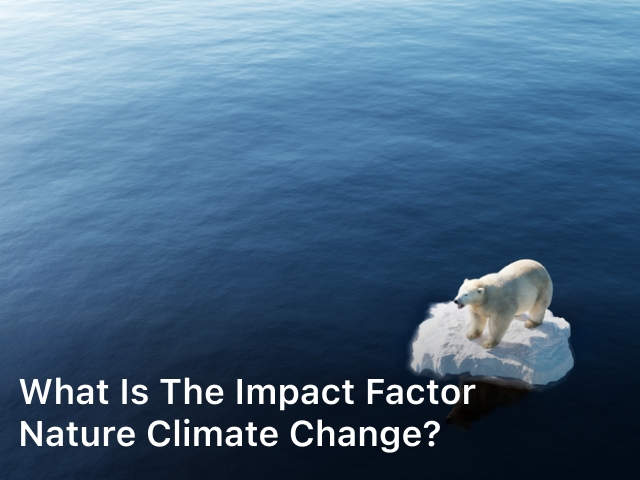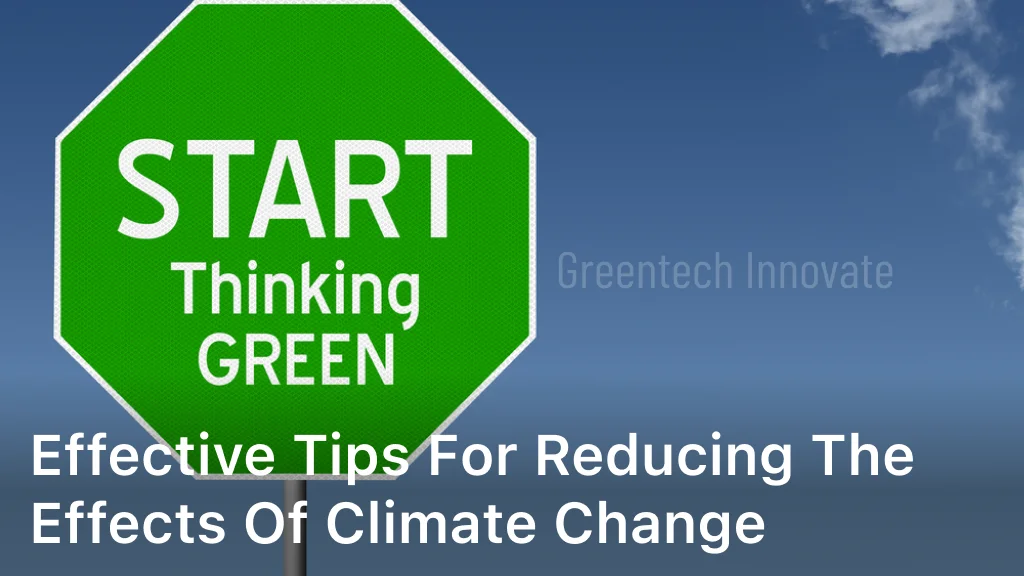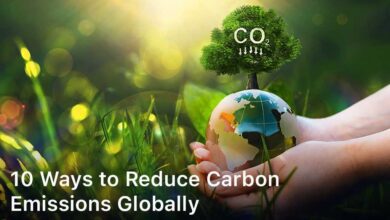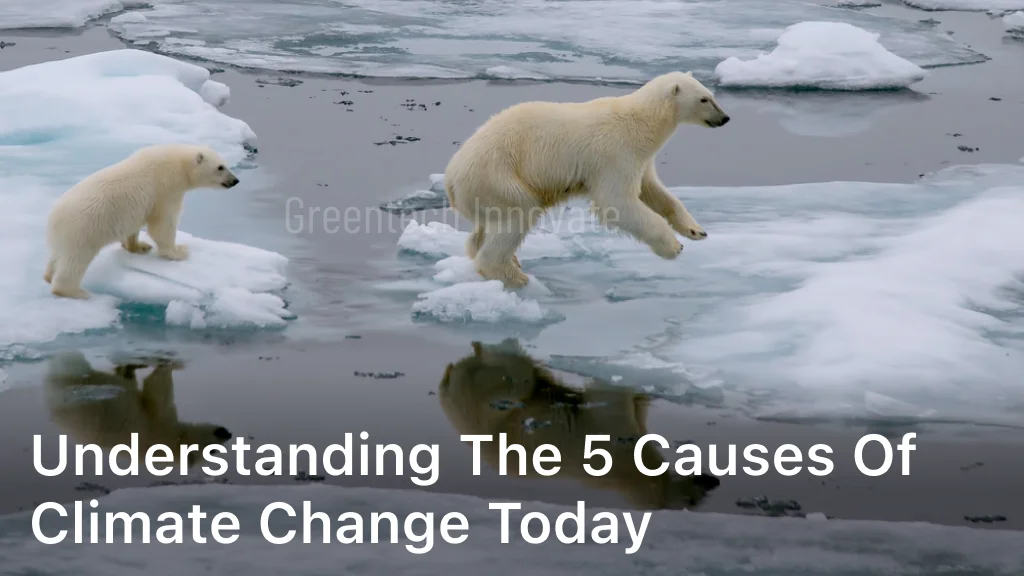
Greentechinnovate.com. Discover the 5 causes of climate change impacting the world today, learn about their consequences and possible solutions. Be informed, be prepared.
Climate change is one of the most significant challenges facing our planet today. Its consequences are already being felt on a global scale, with rising temperatures, melting ice caps, and changes to weather patterns. In this article, we will explore the five main causes of climate change that are driving these changes.
By understanding these causes, we can better comprehend the consequences they bring and explore potential solutions. Individuals, businesses, and governments must all work together to address the issue of climate change and create a sustainable future for generations to come.
5 Causes of Climate Change Today
Key Takeaways:
- There are five main causes of climate change.
- Understanding these causes is crucial for addressing the issue of climate change.
- Individuals, businesses, and governments all have a role to play in mitigating the causes and consequences of climate change.
- We must all work together to create a sustainable future for generations to come.
- Climate change is already having significant impacts on a global scale.
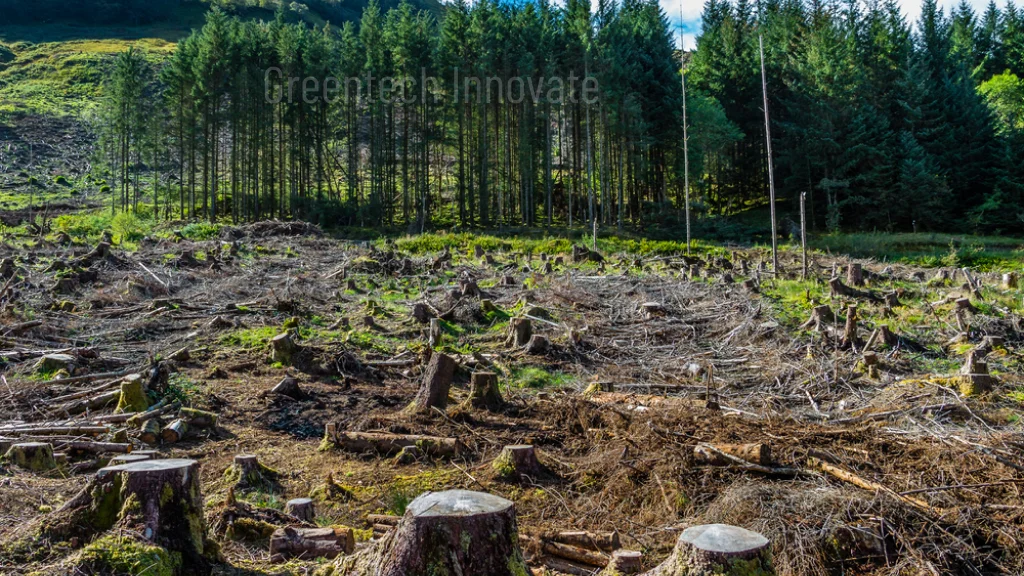
Carbon Dioxide Emissions
Human activities, such as burning fossil fuels for energy, transportation, and industrial processes, are the primary sources of carbon dioxide emissions. When fossil fuels are burned, carbon dioxide is released into the air, trapping heat within the Earth’s atmosphere and causing global temperatures to rise.
The use of coal, oil, and natural gas has significantly increased since the Industrial Revolution, contributing to a steady rise in carbon dioxide emissions. Deforestation, which removes trees that absorb carbon dioxide, has also contributed to the increased levels of carbon dioxide in the atmosphere.
The consequences of these emissions are far-reaching and severe. They include rising sea levels, more frequent and severe heatwaves, droughts, storms, and floods, which cause damage to infrastructure and natural resources, harm to human health, and loss of life.
“We know that carbon dioxide is a greenhouse gas and that we are releasing an unprecedented amount of it into the atmosphere. The climate consequences are potentially catastrophic,” warns climate scientist Michael Mann.
To mitigate the effects of carbon dioxide emissions, it is essential to transition to renewable energy sources such as wind and solar power. Additionally, improving energy efficiency and increasing awareness of personal carbon footprints can help reduce emissions from transportation and daily activities.
Governments can also implement policies to regulate and reduce carbon emissions from industries and invest in sustainable practices such as reforestation.
By taking steps to reduce carbon dioxide emissions, we can address the causes of climate change and create a more sustainable future.
Methane and Other Greenhouse Gases
Methane is a potent greenhouse gas that contributes significantly to climate change. Along with nitrous oxide and fluorinated gases, methane is responsible for approximately 25% of the Earth’s warming over the past few decades.
Methane is produced by natural processes like wetland decomposition, with human activities such as livestock farming and waste management contributing to higher levels of methane emissions.
According to the Environmental Protection Agency, livestock farming accounts for approximately 30% of global methane emissions. Cows and sheep produce methane during digestion and release it through burps and flatulence.
Additionally, waste management practices such as landfills and wastewater treatment plants also contribute to methane emissions. These activities generate methane through the decomposition of organic materials like food waste and sewage.
“Methane is 84 times more potent than carbon dioxide at trapping heat over a 20-year period” – NASA
Methane has a significant impact on the climate because it is much more effective at trapping heat than carbon dioxide, despite being present in lower concentrations in the atmosphere.
Methane is 84 times more potent than carbon dioxide at trapping heat over a 20-year period. Moreover, when methane is released into the atmosphere, it reacts with other pollutants to form ground-level ozone, which is a harmful air pollutant that causes respiratory issues and damages crops.
To mitigate methane emissions, it is essential to implement strategies like capturing and utilizing biogas from waste management facilities and adopting sustainable farming practices like reducing livestock production and improving waste management.
Additionally, increasing the use of renewable energy sources and improving energy efficiency can help reduce greenhouse gas emissions, including methane.
Deforestation and Land Use Change: The Causes of Climate Change
Deforestation and land use change are two of the major contributors to climate change. Deforestation is the process of clearing forests for agricultural, industrial, and urban use, while land use change is the conversion of land from its natural state to a different use.
These activities release carbon dioxide stored in trees and other vegetation, contributing to the increase of greenhouse gases in the atmosphere.
According to the United Nations Framework Convention on Climate Change (UNFCCC), deforestation and forest degradation account for approximately 10% of global greenhouse gas emissions.
The emissions are caused by the removal of trees that absorb carbon dioxide from the atmosphere and release oxygen in return. Moreover, deforestation also harms biodiversity and results in the loss of habitat for various species.
The Consequences of Deforestation
Deforestation has far-reaching consequences on the environment and contributes to climate change. One of the main consequences is the loss of trees, which play a critical role in absorbing carbon dioxide.
Trees also release water vapor into the atmosphere, which contributes to cloud formation and regulates the Earth’s temperature. Without trees, the land becomes drier, resulting in soil erosion and reduced agricultural productivity.
Furthermore, deforestation severely affects biodiversity. The destruction of forests leads to the loss of habitat for many species, causing them to struggle for survival or become extinct. Additionally, deforestation contributes to a decrease in the Earth’s natural carbon storage, which exacerbates climate change.
Sustainable Land Use Practices
Sustainable land use practices can help mitigate the effects of deforestation and land use change. These include reforestation, afforestation, and restoration of degraded land.
Reforestation involves planting trees in areas where forests have been lost, while afforestation refers to planting trees in areas where there was no forest before. Both methods increase the natural carbon storage and promote biodiversity.
Additionally, sustainable agriculture practices can also help reduce emissions from land use. These practices include agroforestry, crop rotation, and conservation tillage, among others.
Furthermore, sustainable land management practices, such as reducing tillage, avoiding monoculture, and using cover crops, can help prevent soil erosion and preserve soil moisture.
“Sustainable land use practices can help mitigate climate change, reduce biodiversity loss, and improve soil quality.”
Industrial Processes and Emissions: Contributing to the Causes of Climate Change
Industrial processes and the resulting emissions are significant contributors to climate change. Many manufacturing and industrial activities release large amounts of greenhouse gases, including carbon dioxide, methane, and nitrous oxide, into the atmosphere.
According to the Environmental Protection Agency (EPA), the primary sources of greenhouse gas emissions in the industrial sector include:
| Source | Percentage of Total Emissions |
|---|---|
| Electricity and heat production | 31% |
| Transportation | 19% |
| Manufacturing industries and construction | 18% |
| Agriculture, forestry, and other land use | 11% |
| Commercial and residential buildings | 8% |
These emissions contribute to the warming of the planet, leading to more frequent and severe weather events, rising sea levels, and other consequences.
However, there are efforts underway to reduce industrial emissions. Cleaner production technologies, such as renewable energy sources and energy-efficient practices, can help reduce greenhouse gas emissions. Additionally, regulatory policies and carbon pricing mechanisms can incentivize companies to reduce their emissions.
By taking action to reduce industrial emissions, we can mitigate the causes and consequences of climate change and work towards a sustainable future.
Transportation and Its Environmental Impact
Transportation is a significant contributor to climate change, particularly through the burning of fossil fuels in vehicles. The transportation sector is responsible for around 14% of global greenhouse gas emissions, with emissions from this sector increasing faster than any other over the past decade.
There are several ways in which transportation impacts the environment. First, emissions from vehicles contribute to air pollution, which can harm human health. Second, the extraction, refining, and transportation of fossil fuels required for transportation have significant environmental impacts, including habitat destruction and water pollution.
To mitigate the environmental impact of transportation, there are several strategies that can be employed. One of the most effective is to shift towards alternative modes of transportation, such as public transport, cycling, or walking. This can significantly reduce emissions, improve air quality, and promote physical activity.
Another strategy is to promote the use of electric or hybrid vehicles, which emit fewer greenhouse gases than traditional gasoline-powered cars. However, it should be noted that the environmental benefits of electric vehicles depend heavily on the source of the electricity used to charge them.
| Type of Vehicle | CO2 Emissions |
|---|---|
| Gasoline Passenger Car | 404 grams/mile |
| Electric Passenger Car | 133 grams/mile |
| Hybrid Passenger Car | 251 grams/mile |
Source: Environmental Protection Agency
In addition to these strategies, there are also policies that can promote sustainable transportation. For example, governments can invest in public transport infrastructure, implement congestion charges, and provide incentives for the purchase of electric or hybrid vehicles.
By adopting these strategies and policies, we can reduce the environmental impact of transportation and work towards a more sustainable future.
Agriculture and Food Production
Agriculture and food production practices are major contributors to climate change. The impact of these practices begins with deforestation for agriculture, which releases carbon dioxide into the atmosphere and further exacerbates global warming.
Livestock farming is another significant culprit, as it produces methane, a greenhouse gas 25 times more potent than carbon dioxide. Finally, the use of chemical fertilizers releases nitrous oxide into the atmosphere, which is 300 times more potent than carbon dioxide.
Agricultural Activity and Deforestation
The need for agricultural land is a leading cause of deforestation, accounting for up to 80% of forest loss worldwide. Trees absorb carbon dioxide, so deforestation releases the stored carbon dioxide into the atmosphere.
Moreover, deforestation leads to a loss of biodiversity and exacerbates climate change by removing a crucial tool in the fight against it. We must focus on sustainable land use practices and work towards a circular economy where we achieve zero waste, reduce pollution, and conserve biodiversity.
Livestock Farming
The livestock sector is responsible for 14.5% of global greenhouse gas emissions, making it one of the most significant contributors. This is due to the production of methane during the digestive process of cattle, sheep, and other animals. Furthermore, the resources required for livestock farming (such as feed and water) put additional strain on the environment.
We must start moving towards more sustainable alternatives, such as plant-based diets, cultivation of insect-based diets, and reduced consumption of animal products.
Chemical Fertilizers
Chemical fertilizers, composed of nitrogen, phosphorus, and potassium, are used worldwide to increase crop yield. However, the overuse of these fertilizers, particularly nitrogen, contributes to nitrous oxide emissions, which have a much higher potential to exacerbate global warming than carbon dioxide.
We must work towards sustainable agricultural practices, such as regenerative agriculture, that rely on natural soil fertility and ensure that the soil remains healthy for future generations.
Food Miles
Another consideration is the distance that food travels before reaching the consumer, known as food miles. Transporting food around the world carries high carbon emissions, as it often requires air transportation.
By supporting local agriculture and reducing the distance that food travels, we can reduce our carbon footprint. Additionally, we must focus on reducing food waste, which contributes to additional greenhouse gas emissions in landfills.
Melting Ice Caps and Rising Sea Levels
The melting of ice caps and glaciers due to climate change has resulted in rising sea levels. According to the National Oceanic and Atmospheric Administration (NOAA), sea levels have risen approximately 8 inches since 1880, with nearly half of that rise occurring in the last 25 years. This trend is expected to continue, with sea levels projected to rise between 1 and 8.2 feet by the end of the century.
The melting of ice caps is caused by increased global temperatures. In particular, the Arctic has experienced temperatures rising at twice the rate of the global average.
As ice caps melt, they contribute to rising sea levels, which in turn exacerbate coastal erosion, flooding, and storm surge damage. Rising sea levels also threaten the habitats and survival of various species.
| Consequences of Melting Ice Caps and Rising Sea Levels | Impact |
|---|---|
| Coastal Erosion | Rising sea levels lead to an increased incidence of coastal erosion, as waves and currents erode the shorelines. |
| Loss of Habitat | Rising sea levels threaten the habitats of various species, particularly those living in low-lying coastal areas. |
| Extreme Weather Events | Rising sea levels increase the impacts of extreme weather events such as storms and hurricanes, leading to greater damage and loss of life. |
Adaptation and Mitigation Strategies
Adaptation and mitigation strategies aim to address the consequences of melting ice caps and rising sea levels. Some strategies include:
- Building sea walls and other coastal protection measures to reduce the risk of flooding and erosion.
- Reversing deforestation and promoting reforestation to absorb carbon dioxide and reduce the effects of climate change.
- Investing in renewable energy to reduce greenhouse gas emissions and slow down the rate of global warming.
- Developing new technologies to capture and store carbon dioxide emissions from power plants and other sources.
Effective adaptation and mitigation strategies require a coordinated international effort. The Paris Agreement, signed in 2015 by 195 countries, aims to limit global warming to well below 2 degrees Celsius above pre-industrial levels and pursue efforts to limit the temperature increase to 1.5 degrees Celsius. The success of these efforts depends on the commitment and cooperation of nations worldwide.
Changes in Weather Patterns
Climate change has far-reaching consequences, and one of the most visible effects is the alteration of global weather patterns. The rise in global temperatures is causing more frequent and intense heatwaves, droughts, storms, and floods throughout the world. These extreme weather events can have disastrous consequences for communities, ecosystems, and infrastructure.
Heatwaves
Heatwaves are becoming more common and more severe due to climate change. In the United States, heatwaves have become more frequent, and their duration has increased.
According to the National Oceanic and Atmospheric Administration, the summer of 2021 was the hottest on record for the contiguous United States, with 18 states experiencing their hottest summer on record.
Heatwaves can lead to dehydration, heat exhaustion, and even heatstroke, especially for vulnerable populations such as the elderly, children, and those with pre-existing health conditions.
Droughts
Climate change is causing more intense and prolonged droughts in many parts of the world, including the western United States. Droughts can have severe impacts on agriculture, causing crop failures, food shortages, and economic losses for farmers and rural communities. Additionally, droughts can lead to water shortages, which can exacerbate conflicts over water resources and have negative impacts on ecosystems.
Storms and Floods
Climate change is causing more frequent and intense storms, leading to devastating floods in many parts of the world. In the United States, for example, hurricanes and tropical storms are becoming more intense, causing widespread damage and loss of life.
Floods can damage homes, businesses, and infrastructure, disrupting communities and causing economic losses. Climate change is also causing sea levels to rise, increasing the risk of coastal flooding and erosion.
Overall, the changes in global weather patterns caused by climate change are severe and far-reaching, affecting all aspects of society. It is essential to take action to reduce greenhouse gas emissions and mitigate the causes and consequences of climate change.
Solutions for a Sustainable Future
As we have seen, climate change is caused by multiple factors, and it will take a collective effort from governments, businesses, and individuals to mitigate its effects. There are various solutions that can help us transition to a sustainable future and reduce our carbon footprint.
Renewable Energy Sources
One of the most promising solutions for reducing carbon emissions is switching to renewable energy sources. Wind, solar, hydroelectric, and geothermal power are all alternatives to fossil fuels that emit little to no greenhouse gases.
According to the International Energy Agency, renewables are on track to become the largest source of electricity globally by 2025. Governments can incentivize businesses and households to invest in renewable energy, and individuals can switch to green energy providers and install solar panels on their roofs.
Energy Efficiency
Another way to reduce our carbon footprint is by increasing energy efficiency. This means using less energy to perform the same tasks, such as replacing incandescent light bulbs with LEDs, using programmable thermostats, and buying energy-efficient appliances. Energy-efficient buildings can also play a significant role in reducing emissions, as heating and cooling account for a large portion of energy usage.
Reforestation and Forest Conservation
Reforestation and forest conservation are effective solutions for sequestering carbon and mitigating deforestation. Forests are natural carbon sinks that absorb carbon dioxide from the atmosphere, and protecting them is essential for combating climate change.
Governments can support reforestation programs and regulate logging and mining activities to prevent deforestation. Businesses and individuals can also contribute by supporting sustainable logging practices and reducing paper waste.
Sustainable Urban Planning
More than half of the world’s population now lives in cities, and as urbanization continues, sustainable urban planning will become increasingly important. Sustainable cities prioritize public transportation, bike lanes, and green spaces, reducing the need for cars and promoting a healthier lifestyle.
Cities can also encourage sustainable building practices, such as green roofs and rainwater harvesting systems, to reduce energy consumption and support the local ecosystem.
International Cooperation
Climate change is a global issue that requires global solutions. The Paris Agreement, signed by 196 countries in 2015, is a historic collaboration to limit global warming to well below 2°C.
Countries can work together to share knowledge and resources, support developing nations in transitioning to a low-carbon economy, and hold each other accountable to their emissions reduction goals. Individuals can also call on their governments to take action and participate in climate marches and other forms of activism.
A Sustainable Future is Within Reach
The solutions outlined above are just a few of the many ways we can work towards a sustainable future. By taking action today, we can create a healthier planet for future generations. Together, we can mitigate the causes and consequences of climate change and build a more sustainable world.
Conclusion
In conclusion, understanding the 5 causes of climate change today is vital for addressing this global crisis. The excessive release of carbon dioxide, methane and other greenhouse gases, deforestation and land use change, industrial processes and emissions, and transportation are the main causes of climate change with far-reaching consequences for the planet.
It is imperative that we take steps towards mitigating climate change and creating a sustainable future for generations to come. This can be achieved through the adoption of various solutions such as renewable energy sources, energy efficiency, reforestation, sustainable urban planning, and international cooperation.
It is time for all of us to take responsibility for our actions and work towards a sustainable future. Let us act now before it is too late and ensure that our planet remains habitable for future generations.
FAQ
What are the five main causes of climate change?
The five main causes of climate change are carbon dioxide emissions, methane and other greenhouse gases, deforestation and land use change, industrial processes and emissions, and transportation.
What activities contribute to carbon dioxide emissions?
Activities such as burning fossil fuels, deforestation, and industrial processes contribute to the excessive release of carbon dioxide into the atmosphere.
What are the sources of methane emissions?
Methane emissions come from sources such as livestock farming and waste management. Other greenhouse gases like nitrous oxide also play a role in global warming.
How does deforestation contribute to climate change?
Deforestation releases carbon dioxide stored in trees and alters ecosystems. This leads to increased greenhouse gas emissions and loss of biodiversity.
What impact do industrial processes have on climate change?
Industrial activities such as manufacturing and mining release large amounts of greenhouse gases into the atmosphere, contributing to climate change.
How does transportation contribute to climate change?
Transportation, particularly the burning of fossil fuels in vehicles, is a significant contributor to climate change. It releases greenhouse gases into the atmosphere.
What role does agriculture play in climate change?
Agriculture and food production practices contribute to greenhouse gas emissions through deforestation for agriculture, livestock farming, and the use of chemical fertilizers.
How does climate change affect melting ice caps and rising sea levels?
Climate change leads to the melting of ice caps and glaciers, resulting in rising sea levels. This contributes to coastal erosion, loss of habitat, and increased vulnerability to extreme weather events.
What are the consequences of changes in weather patterns due to climate change?
Climate change causes alterations in global weather patterns, resulting in more frequent and intense heatwaves, droughts, storms, and floods. It also exacerbates natural disasters.
What are some solutions to combat climate change?
Solutions to combat climate change include renewable energy sources, energy efficiency, reforestation, sustainable urban planning, and international cooperation.
